How to Take Care of Ferns: The Complete Guide
Did you know that lush green ferns make an amazing home decor indoor plant? That’s right! You might be used to seeing ferns growing outside, but many fern varieties are perfect houseplants! These bright green plants come in many different color varieties, shapes, and sizes. And as long as you... The post How to Take Care of Ferns: The Complete Guide appeared first on Architecture E-zine.

Did you know that lush green ferns make an amazing home decor indoor plant? That’s right! You might be used to seeing ferns growing outside, but many fern varieties are perfect houseplants! These bright green plants come in many different color varieties, shapes, and sizes. And as long as you provide them with growing conditions and care, they will add lushness and amazing texture to your rooms! Start your gardening journey with a low-maintenance Boston fern and once you have got the hang of these beautiful plants, you can successfully start growing more of them indoors! After you have mastered the art of caring for a fern plant, you can move to growing an avocado or mango tree from seed! Continue reading to find out how to take care of indoor ferns to ensure that they grow healthy and lush all year round:
Grab some snacks and let’s dive into the world of fern care!

Is there a difference between indoor and outdoor ferns?
There are many tropical and subtropical fern species, but there are also many fern species suited to more moderate climates. These ferns might thrive in colder parts of the house, but they won’t survive that well in overheated spaces. If your home has central heating, then this tropical plant will definitely thrive.
Ferns thrive in homes with central heating

What are the best varieties of ferns to grow indoors?
Ferns make excellent houseplants because their lush green leaves beautifully enhance all floral plants. What’s more, they can be grown in a variety of containers, ranging from funky clay pots to hanging baskets. The best part? They don’t require full sun to thrive. Here are some of the most popular indoor fern varieties:
- Asparagus fern (Asparagus aethiopicus)
- Bird’s nest fern (Asplenium nidus)
- Boston fern or Sword fern (Nephrolepis exaltata)
- Button fern (Pellea rotundifolia)
- Holly fern (Cyrtomium falcatum)
- Maidenhair fern (Adiantum tenerum or Adiantum capillusveneris)
- Rabbit’s foot fern (Davallia fejeensis)
- Staghorn fern (Platycerium bifurcatum)
- Tree fern (most often Cyathea cooperi)
There are so many cool varieties of ferns to grow in your home

The Boston Fern is one of the easiest ferns to take care of

Do ferns clean the air?
Ferns are excellent in removing common airborne pollutants like formaldehyde, xylene, and toluene from the air. Moreover, these pollutants have been linked to headaches, respiratory problems, and cancer cell growth. The Boston fern also helps to battle winter dryness by increasing interior humidity. So, ferns are a truly great addition to any home! Aloe Vera plants are also great for air purifying.
Ferns are a wonderful air-purifying addition to every home

Where should ferns be placed indoors?
Selecting the ideal location for a fern is the first step! Remember to never expose your fern to direct sunlight because it will burn! High humidity is a preference of most tropical ferns. In the wild, ferns grow in shady areas of a variety of forests and rainforests. To achieve this same effect indoors, make sure to expose your ferns to indirect sunlight for the majority of the day. Hardy ferns, such as Boston ferns, Bird’s nest ferns, and Button ferns, are more forgiving, so you can place them near west or east-facing windows only if enough light is available. If you discover your fern’s fronds are yellowing (and you are watering it properly), try relocating it closer to a window. It may require more light than its current location can provide. By keeping nearby windows closed, you will protect your ferns from drafts and the chilly air. Just like succulents, avoid putting ferns right against windows since they like ambient light, and foliage that comes into direct contact with the window may be harmed and damaged. Moreover, ferns thrive in bathrooms thanks to the steamy showers, but you can also mist their leaves once or twice a day with room temperature water.
Place your ferns near a window but avoid direct sunlight

Make sure to protect your ferns from drafts and the chilly air

How often should you water a fern?
Ferns are accustomed to high humidity and moist soil in their natural habitat on the forest floor. The shade tree canopy prevents the sun from absorbing all of the water in the soil and drying it up. You can replicate these same conditions at your home by keeping the soil moist but not fully dry. Allow the water to go through the pot and out the drainage holes when watering your indoor fern so that it does not sit in a pool of water. Before re-watering, make sure to wait until the very top layer appears to be a bit dry. Moreover, when ferns dry out, their color fades, but as soon as they are watered, they green up again! While ferns want to be kept damp, remember that over-watering can lead to root rot. So, make sure to keep the soil moist but not soaked. Always use containers with effective drainage holes at the bottom, as with most plants. In the summer, water your ferns every 4-5 days, and in the winter, every 7-10 days.
Keep your ferns damp but avoid overwatering because that leads to root rot
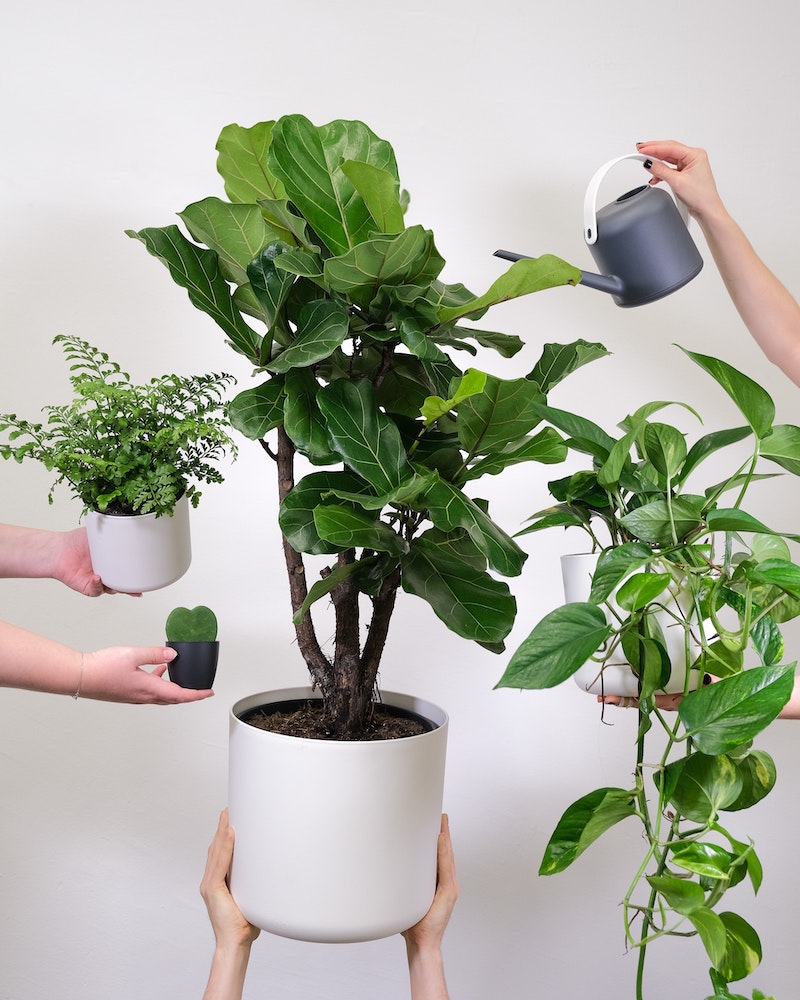
In the summer, water your ferns every 4-5 days, and in the winter, every 7-10 days.
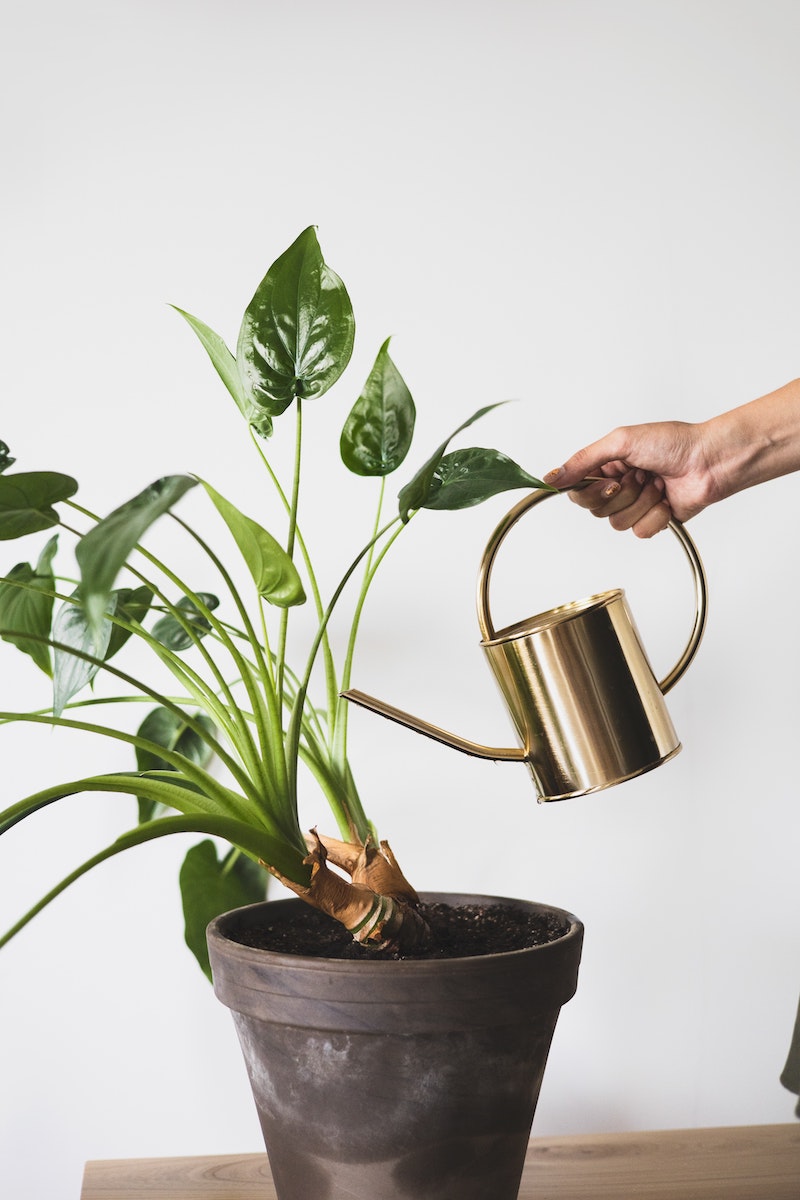
Should you clean your indoor fern?
Another key part of fern maintenance is cleaning. Your fern’s foliage will pick up dust from your home while it is sitting inside. That is why it is important to clean its leaves on a regular basis in order to keep them healthy. If your bath or shower has a detachable shower head, simply rinse the leaves there. If not, just dampen a cloth and wipe the leaves gently to remove any dust or watermarks. To help reduce the spread of disease, throw away any brown, dry, or dead leaves.
Keep your fern’s leaves green and shiny at all times

What temperature is best for indoor ferns?
Most indoor ferns prefer temperatures similar to those found in your home. The majority of ferns despise the cold and chilly weather. What’s more, these plants thrive in temperatures between 65 °F and 75 °F during the day and about 10 degrees cooler at night- as low as 55 °F. Because most ferns grown as houseplants are native to tropical or subtropical climates, they begin to suffer when temperatures drop below 50 °F. So, make sure your ferns are not too close to a window or a door where cold drafts could reach them during the winter. Keep ferns away from fireplaces, air vents, and other heat sources to protect them against rapid temperature changes in the opposite direction, as well.
Ferns love the temperature found in your home
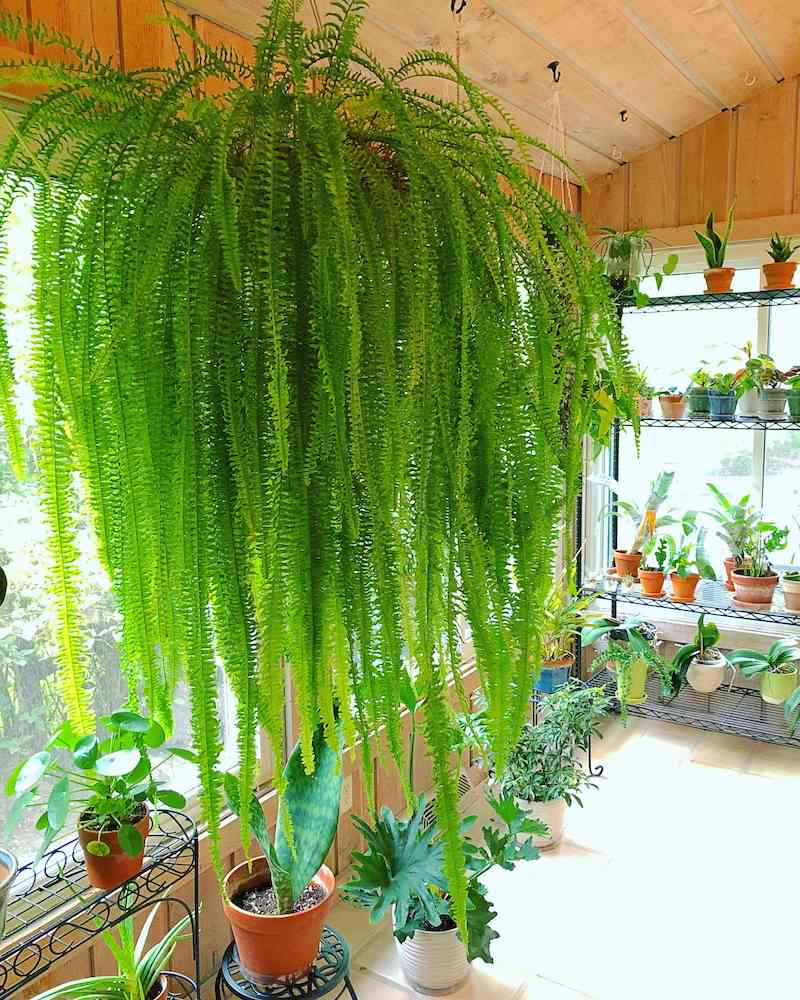
Some fern varieties tolerate the cooler weather more than others
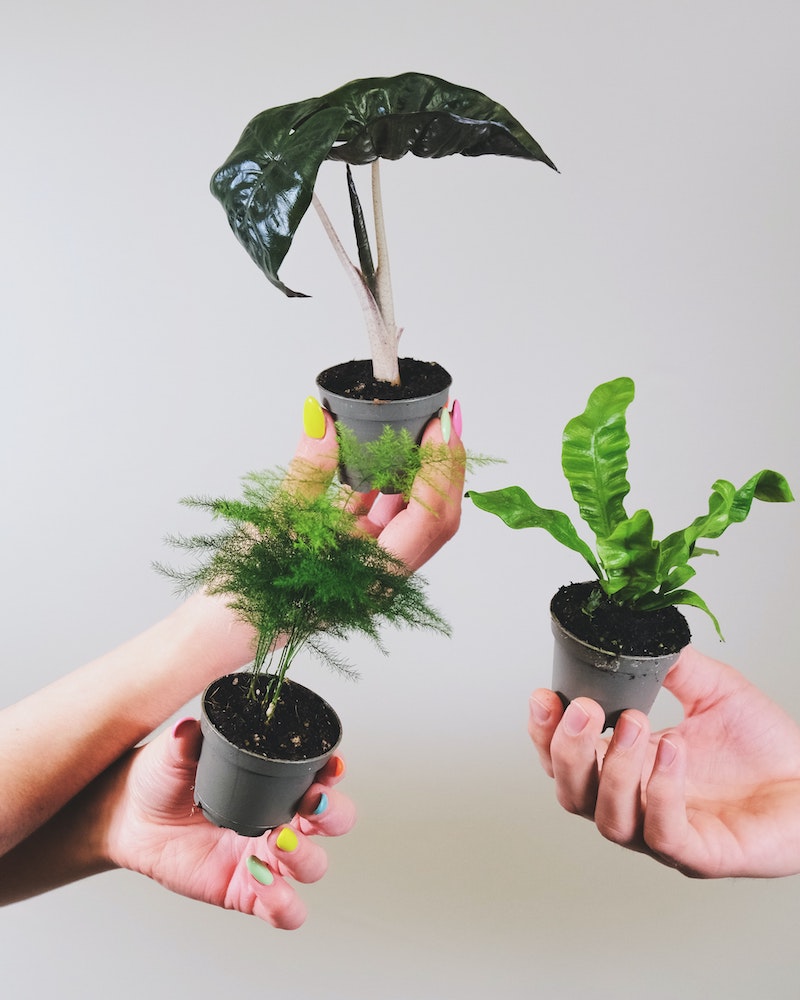
How much sun do ferns need?
Although most ferns prefer moist, shaded environments such as forest floors, this does not mean they do not require light. What’s more, the finest, as well as the worst thing that can happen to your fern, is light! We often assume that all houseplants require the strongest light possible, but this is rarely the case with ferns. As we already mentioned, ferns grow on the forest floor under tree canopies in their native habitat. This indicates that they are accustomed to dappled, indirect light. Their delicate leaves can not handle direct sunlight and will most likely burn. If your fern is near a south-facing window, a sheer curtain can provide enough light without being overbearing. Many ferns thrive in gloomy or low-light environments, such as those found in bathrooms and offices. However, if your plant is becoming yellow and not growing, it is most likely due to a lack of light. If you need to supplement the natural light your ferns receive, place a grow light on them for a few hours each day. This, however, should come from a specialized gardening bulb or a fluorescent strip, since ordinary light bulbs produce excessive heat.
The delicate leaves of the fern can not handle direct sunlight
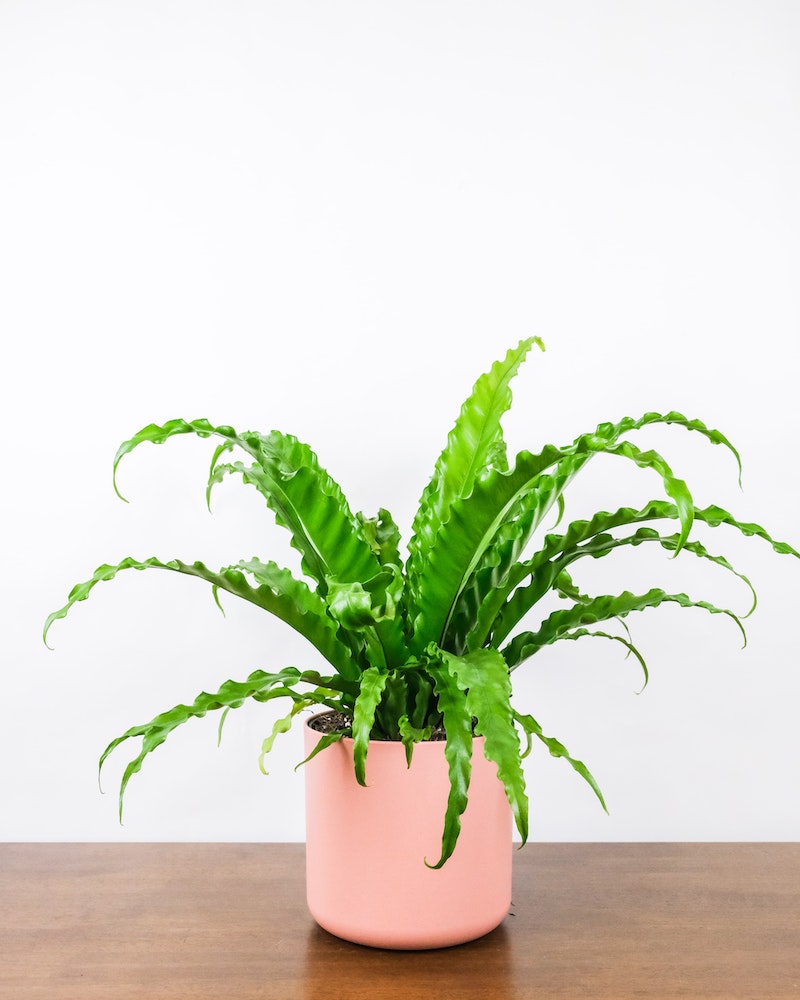
Should you mist ferns?
All ferns enjoy moisture, so you should keep them in a damp environment. Moreover, If the edges of your indoor fern appear dry or brown, it probably needs more humidity in the air! It is a good idea to mist your fern every day or set out a tray with water and pebbles nearby, to keep your plant happy and green. Place the pot on trays of moist pebbles or clay grains in the living room. Unless a humidifier keeps the humidity of the entire room high, you should also mist your ferns at regular intervals with tepid, soft water.
Ferns love moisture more than anything

What soil is best for ferns?
The next step is to provide the appropriate compost for your ferns. The majority of ferns are forest or woodland plants with soft, delicate roots that have adapted to the light forest soil rich in leaf mold and decomposed vegetable waste. Free-draining compost is essential for preventing waterlogging of the roots. Moreover, the finest compost is one that has peat or a fibrous peat substitute, as well as plenty of sand. You should never allow the compost to dry out, which may require watering the plant daily in a warm, dry environment or misting.
The delicate roots of the fern have adapted to the light forest soil rich in leaf mold and decomposed vegetable waste

Should you fertilize ferns?
A little fertilizer every now and then will help your ferns maintain their green appearance and healthy look. From early spring through mid-autumn, you can use a slow-release fertilizer or a half-strength liquid houseplant fertilizer once a month. Because most ferns aren’t actively growing during the winter, you do not need to fertilize them.
Fertilize your fern plants during the spring months
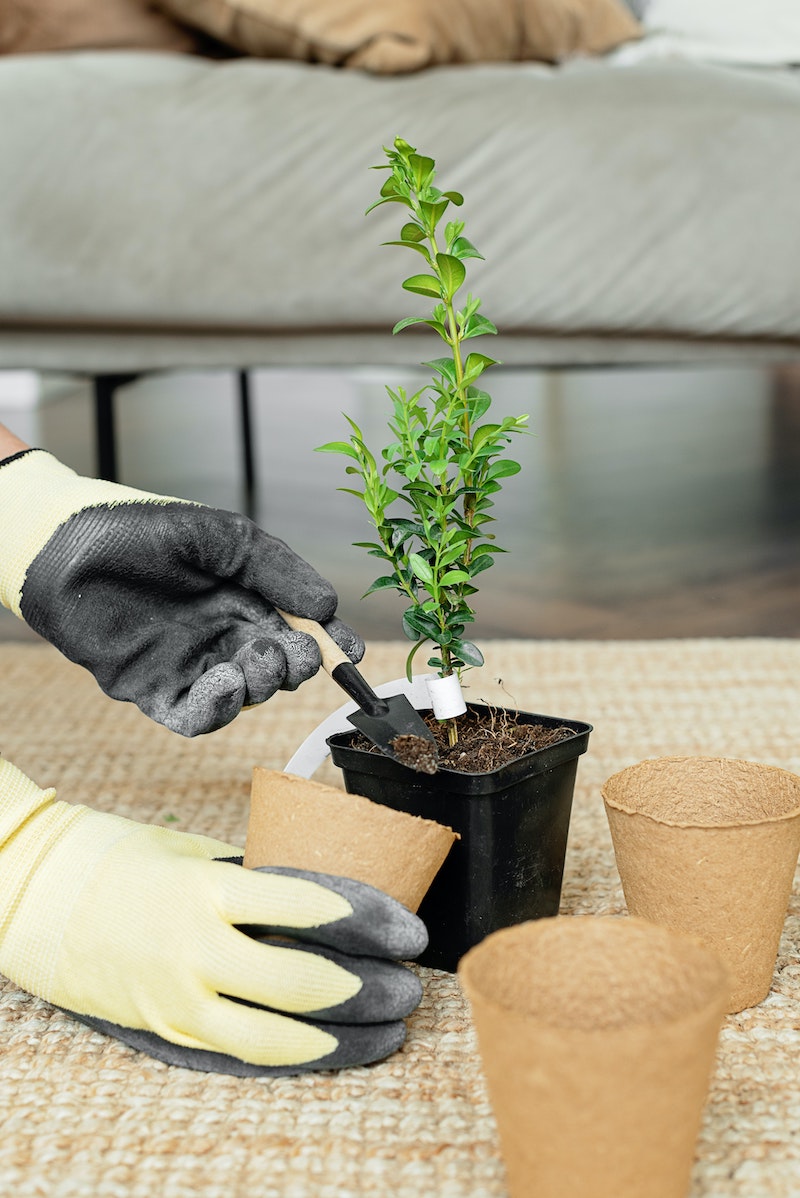
Should you repot ferns?
You may need to divide and repot your fern plants every couple of years, depending on their growth and development. If you can see roots sprouting through the drainage hole or if the plant looks slightly lifted out of the dirt, it is a sign that your fern has outgrown its container. If your fern isn’t growing as swiftly as it once did, divide it in half with a garden trowel before repotting to allow the plant’s roots to spread out more. The greatest time to divide indoor ferns is in the spring, when they are ready to produce new, healthy growth. Split your ferns in half when repotting to get two plants out of one. Dividing your fern plants is a great and simple technique to increase the amount of greenery in your home. Moreover, you can share these new plants with friends and family! You can also use the powdery spores generated in little capsules to grow new ferns. The capsules are visible on the underside of the fronds as rows of rusty brown spots. These will form a green film into which that new fern will grow.
If you can see roots sprouting through the drainage hole, it is time to repot your fern

Split your ferns in half when repotting to get two plants out of one
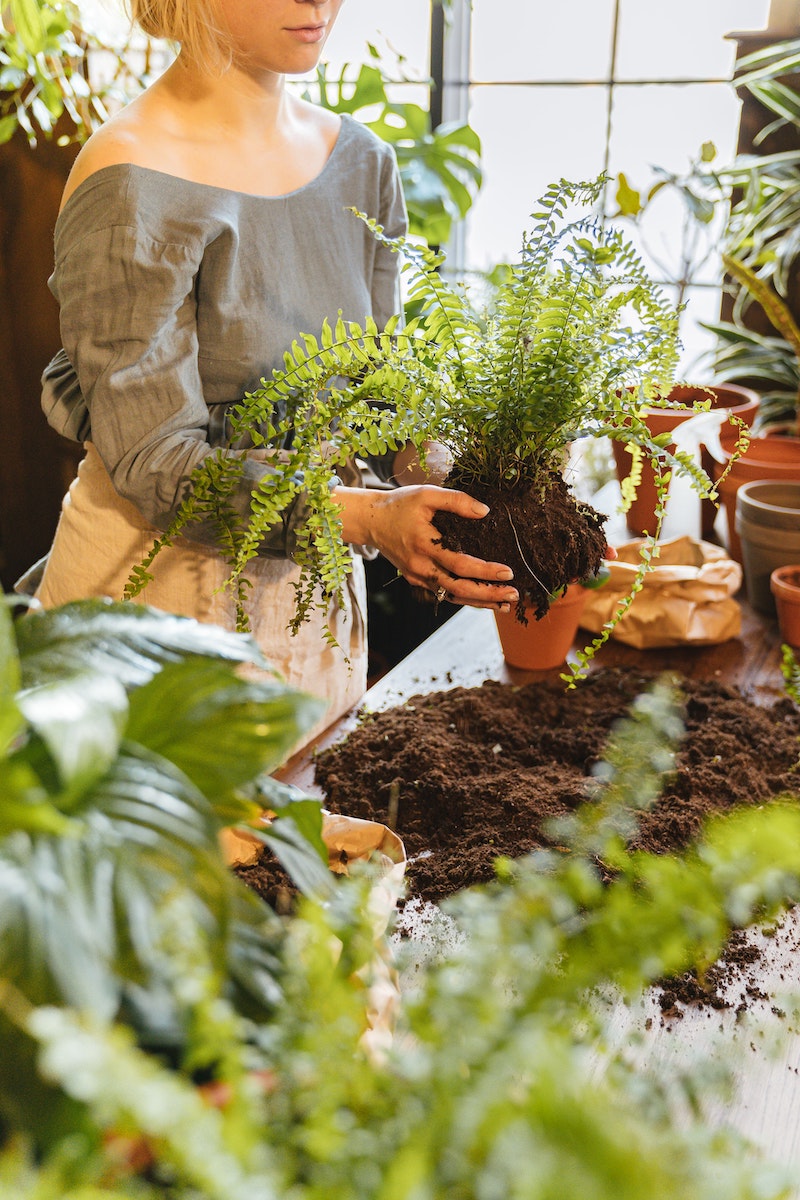
Choose your favorite fern variety and make it a part of your plant collection

The post How to Take Care of Ferns: The Complete Guide appeared first on Architecture E-zine.
